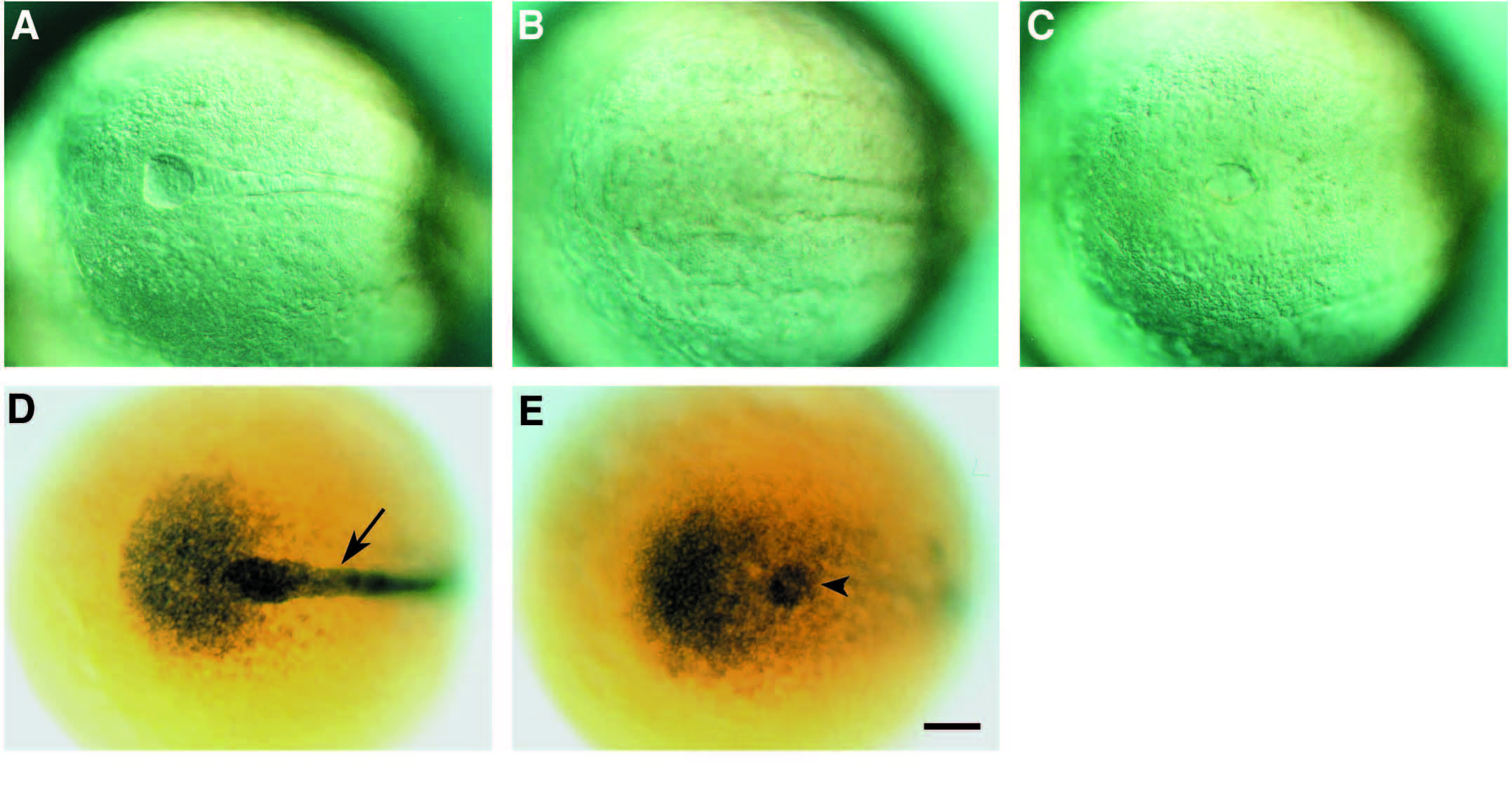Fig. 10 The ntl gene is required for the formation of Kupffer’s vesicle. (A-C) Kupffer’s vesicle never forms in ntl mutants, but can form in flh mutants. Nomarski optics photographs of dorsal views of the tailbuds of live wild-type (A), ntl (B), and flh (C) mutant embryos. Anterior extends to the right. (A) In wild-type embryos, Kupffer’s vesicle is large and prominent, lying below the end of the forming notochord. (B) In ntl mutant embryos, no vesicle forms, however boundaries between axial and paraxial mesoderm can be seen. (C) In flh mutant embryos, Kupffer’s vesicle often forms, but it is smaller and less regularly shaped than in wild-type embryos. Axial-paraxial boundaries are absent. (D,E) Expression of ntl RNA as a marker for forerunner cell development in wild-type (D) and ntl mutant (E) embryos. Dorsal views of the tailbud at the 2-3-somite stage; anterior extends to the right. (D) In wild-type embryos, ntl RNA is expressed in cells located posteriorly in the tailbud, and in the cells of the forming notochord (arrow). ntl RNA is also expressed by cells of the forerunner cluster that will form Kupffer’s vesicle, but this labeling is obscured by labeling in the overlying notochord rudiment. (E) In ntl mutant embryos, there is an absence of labeling in the axial mesoderm, so labeling in the forerunner cluster is obvious (arrowhead). Scale bar: 50 μm.
Image
Figure Caption
Figure Data
Acknowledgments
This image is the copyrighted work of the attributed author or publisher, and
ZFIN has permission only to display this image to its users.
Additional permissions should be obtained from the applicable author or publisher of the image.
Full text @ Development

